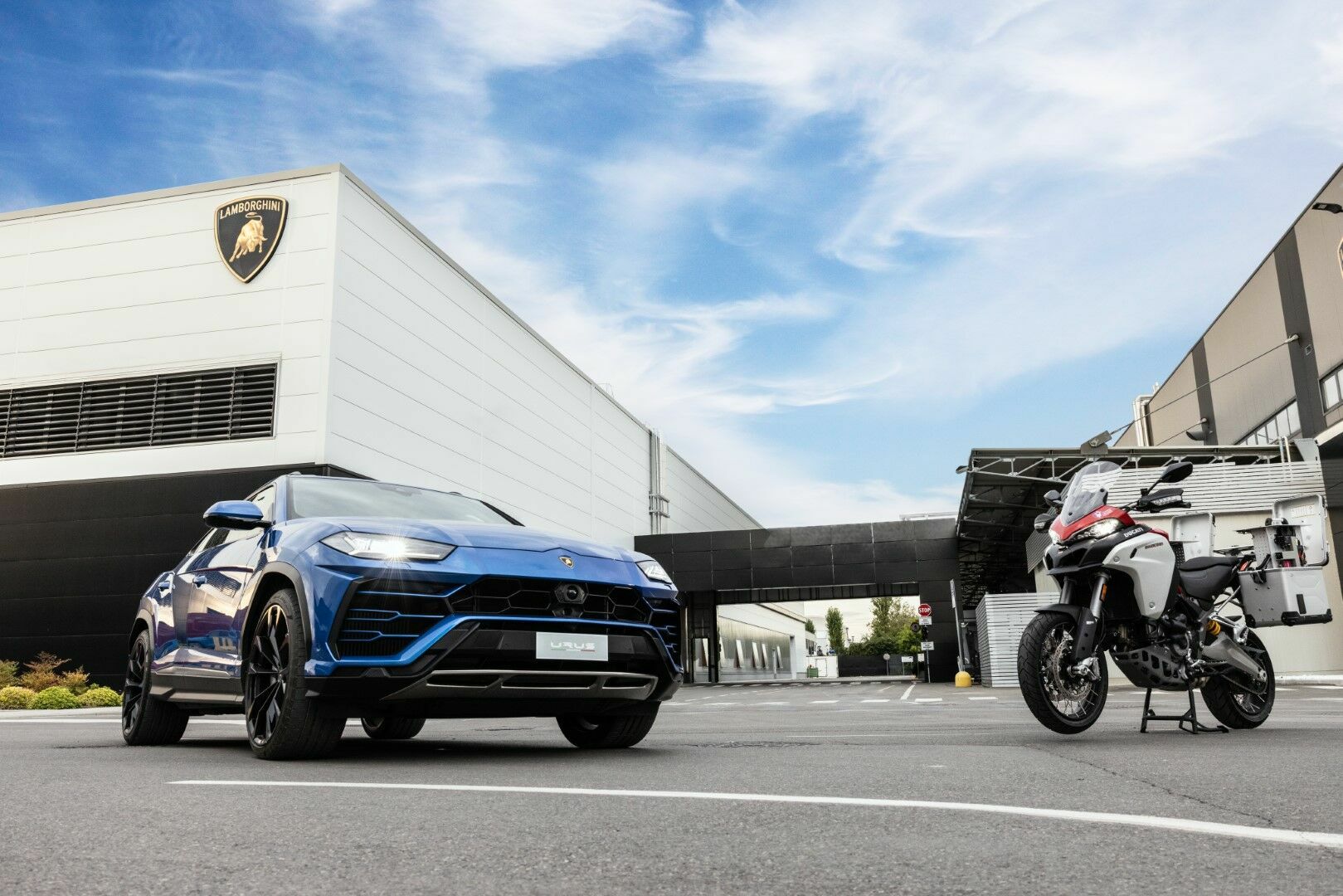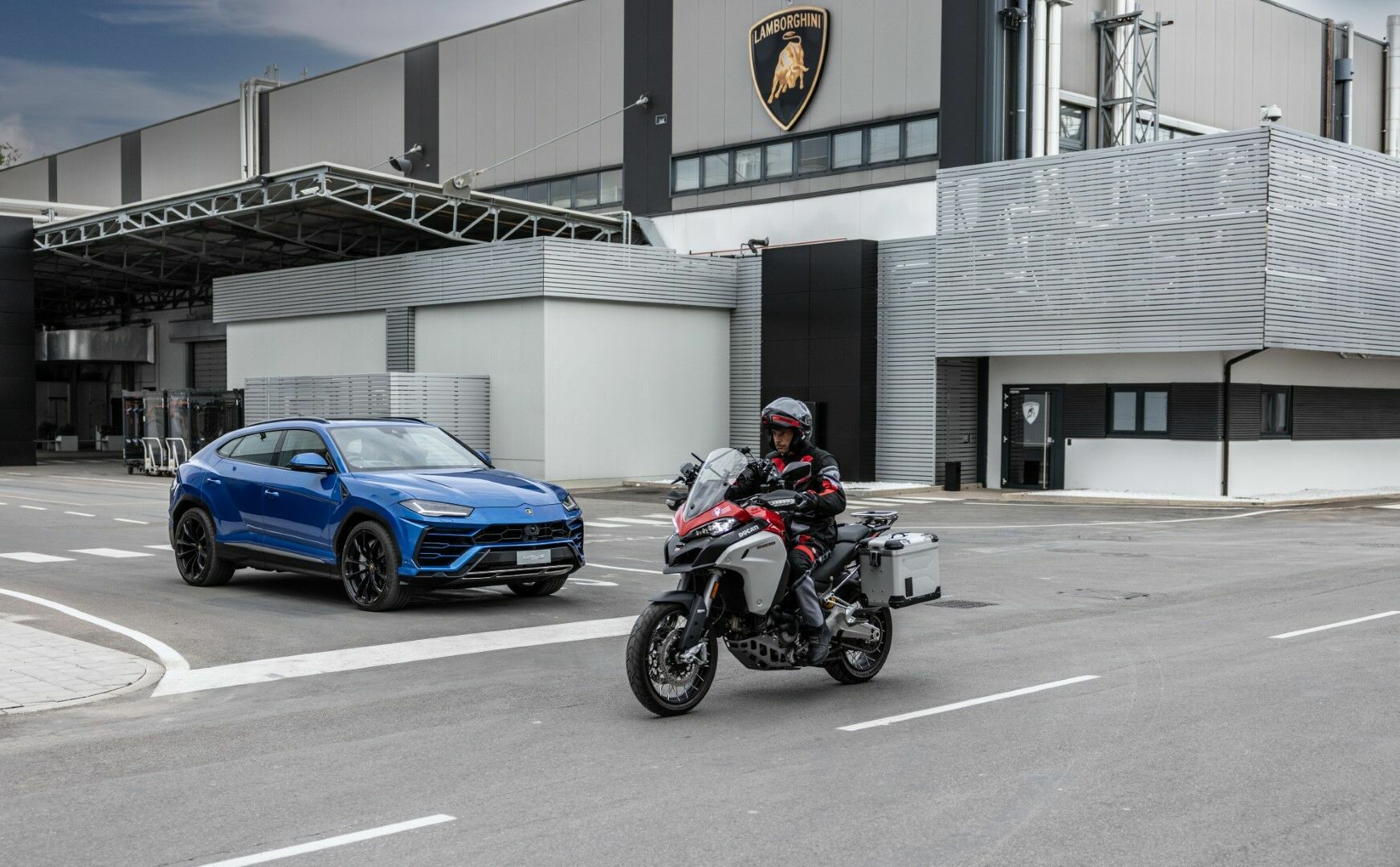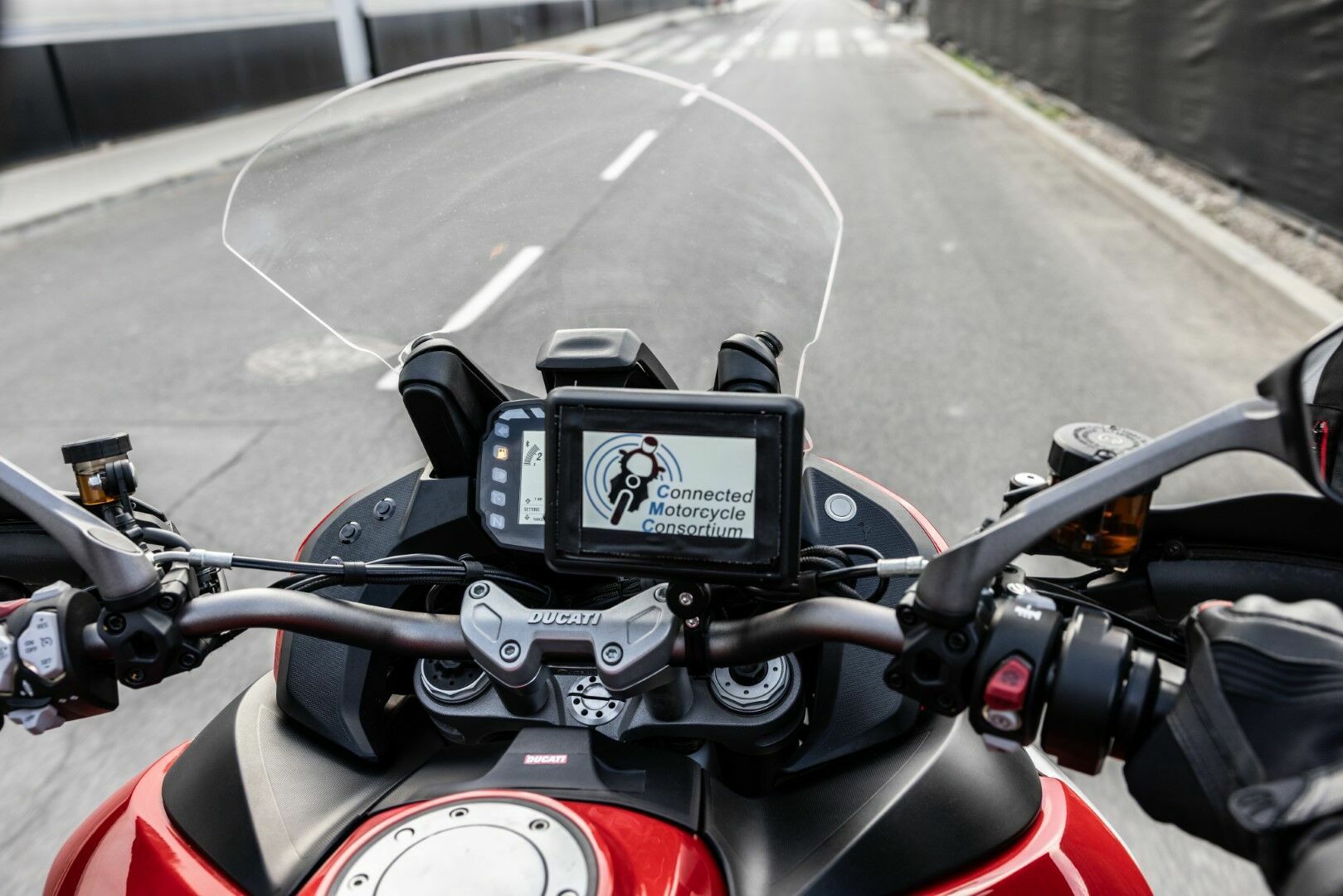Ducati confirms its commitment to road safety at the Connected Motorcycle Consortium event
- Since 2016, the Bologna based manufacturer has been an active part of the international Connected Motorcycle Consortium (CMC), whose aim is to include two-wheeled vehicles in the future of connected mobility to improve the safety of motorcyclists
- The Lausitzring demonstration event saw Ducati involved in simulating three of the most common cases in which communication between motorcycle and car can help reduce the number and risk of accidents
- The three methodologies for applying vehicle communication (V2V) are illustrated in a video involving a Ducati Multistrada and a Lamborghini Urus, available on the Ducati.com website
Ducati renews its commitment to guarantee the best level of safety for motorcyclists all over the world. The Bologna based manufacturer was one of the major protagonists of the Demo Event organized at the Lausitzring (Germany) by the Connected Motorcycle Consortium to demonstrate the effectiveness of the motorbike-car connectivity systems developed during this consortium's research cycle.
The Connected Motorcycle Consortium (CMC) is an international association that brings together the main manufacturers of two-wheeled vehicles with the aim of including motorcycles in the future of connected mobility to improve the level of safety of motorcyclists. Car manufacturers have been studying and developing Vehicle to Vehicle (V2V) communication technologies for years and the CMC is working to also include the information sent by motorbikes, which have different needs and dynamics, so that these can be standardized when this technology will be integrated across the entire fleet of motorbikes and cars in circulation in the future.
The CMC was founded in 2016, the year in which Ducati also became affiliated, and saw members initially involved in an accurate analysis of the most dangerous accidents between motorbikes and cars in terms of frequency and severity of the damage suffered by motorcyclists. Starting from this investigation, the cases in which connectivity could help to a greater degree were selected and the development of those methodologies capable of reducing the number of impacts and their risk for the safety of motorcyclists began. A fundamental aspect of this research was to limit the system's reaction time as much as possible since the reduction of the risk of an accident depends on how far in advance one of the two protagonists can be warned.
To demonstrate the effectiveness of the systems studied and developed, Ducati opted to collaborate with Lamborghini (also part of the Audi Group), which supported the project during the experimental phase by providing a Urus for case simulation use.
Ducati chose to work on the three most critical and dangerous accident cases, i.e. those which place the motorbike in a position of non-visibility towards oncoming cars or which place the motorcyclist in a situation in which he has no visibility of what is happening ahead. In both situations, communication between vehicles, integrated with the on-board sensors, can help reduce the number of accidents.
Ducati carried out the development of the technology together with various suppliers, including Bertrandt for the hardware part and Nfiniity for the operating system and the creation of the algorithms. The prototype in this development phase includes an additional screen on the motorbike on which warning signals are displayed which can inform the motorcyclist of any danger.
The cases analysed and demonstrated at the Lausitzring by Ducati and Lamborghini were IMA (Intersection Movement Assist), LTA (Left Turn Assist) and DNPW (Do Not Pass Warning).
The focus was placed on IMA (Intersection Movement Assist) when a motorbike, proceeding on a busy road, is approaching a reduced-visibility intersection at which a car is arriving at the same time from a secondary road. To make this situation even more critical, Ducati chose to insert a fixed obstacle to completely obscure the view of the motorbike both for the driver and for the car's auxiliary systems. In this case, the danger sign is displayed on the dashboard of the car, signalling the arrival of the motorbike, suggesting to the motorist to approach the intersection with great caution.
LTA (Left Turn Assist) instead concerns an intersection in which both the motorbike and the car are travelling on the main road but in the opposite direction and the car wishes to turn left. In this situation the motorbike vehicle is less visible than a car, even through the auxiliary systems, with the risk of not being assessed well by the oncoming motorist. Also in this case, as soon as the motorist activates the direction indicator when approaching the intersection, the traffic warning signal for the oncoming motorbike is displayed.
DNPW (Do Not Pass Warning) is instead the case in which a motorbike, in a queue, wants to overtake a large vehicle that precedes it and which in turn has a car in front of it, not visible to the motorcyclist, who wants to turn left. In this case it is the motorcyclist who displays the warning system as soon as the system sees that both the car and the motorbike have activated the direction indicator.
Simone Di Piazza, Ducati Innovation Manager: “For Ducati the issue of road safety is really important. We have already demonstrated this in the past, being the first motorcycle manufacturers in the world to have the entire range equipped with ABS Cornering and the first to introduce Blind Spot Detection. The work presented today makes us proud and we are convinced that communication between vehicles, when ready enough to be introduced on all motorbikes and cars, will have a fundamental role in reducing the number and severity of accidents involving motorcyclists".
To demonstrate the effectiveness of the systems developed in this CMC research cycle, Ducati and Lamborghini have created a video involving a Ducati Multistrada and a Lamborghini Urus. The video is available on the Ducati YouTube channel and on the Ducati.com website.


